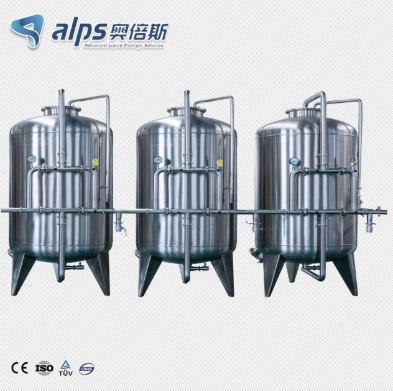Advanced Liquid Package Solution
Currently, ultra-pure water is a primary concern for Industrial, community, and home use. There are different water treatment systems, and the particular system to be used at each point in time is dependent on the purpose for which the water is produced.

Whether you are into large scale production or personal consumption of water, partnering with the right water treatment system manufacturers can be the defining factor if you want to be successful in your start-up. This article explores the various type of water treatment systems.
There are two types of the water treatment system, the Household water treatment system, and the community water treatment systems.
The household treatment processes are usually not as cumbersome as the community treatment process. Follow thru for the types of systems used in water treatment.
1.The household water treatment system
Recently, in many homes, water treatment systems are becoming a necessity. This is as a result of the increase in the contamination level of household water systems in past eras.
More so, Households are begging to ensure that the water they use ifs free of contaminants and germs that causes diseases.
The methods used for treating household water is Filtrations and purifications with chemicals.
2.The water treatment system for community
The source of drinking water for the community is larger and as such is exposed to contamination thus, it needs adequate treatment to get rid of the organisms that are capable of causing diseases.
The community water treatment system requires the use of a different system of water treatment to provide the community with safe drinking water. Surface water is the major source of water supply to the community, hence the surface water treatment method is used.
This method involves different stage treatment and they are
i.Flocculation and Coagulation
This is usually the first step when treating water, here chemicals are added to the water to be treated, particles in the water to bind to these chemicals and form bigger particles that are known as floc,
ii.Sedimentation
The flocs that have been formed settles to the lower part of the water treatment system. This process of settling is known as sedimentation.
iii.Filtration
Sand, gravel, and charcoal are used as filters for the settled flocs while clear water passes through to the next chamber.
iv. Disinfection
After filtration, there is a possibility that there would be parasites and germs in the cleared water that was filtered therefore Chlorine or chloramine is added as a disinfectant to help protect the water from germs when it passes through the pipes to the community for use.
Water treatment varies in community and this is reliant on the quality of the water that is sent to the treatment plant. Surface water requires more treatment and filtration than groundwater because surface water contains more sediment and pollutants and so are more likely to be contaminated than the groundwater.
Conclusion
The treatment of water is so important that many likely water-borne diseases can be avoided. Water-borne infections are indeed responsible for more than 80% of diseases all over the world.
However, to stay safe and healthy, the best water treatment system needs to be purchased from reliable and loyal manufactures.

By continuing to use the site you agree to our privacy policy Terms and Conditions.